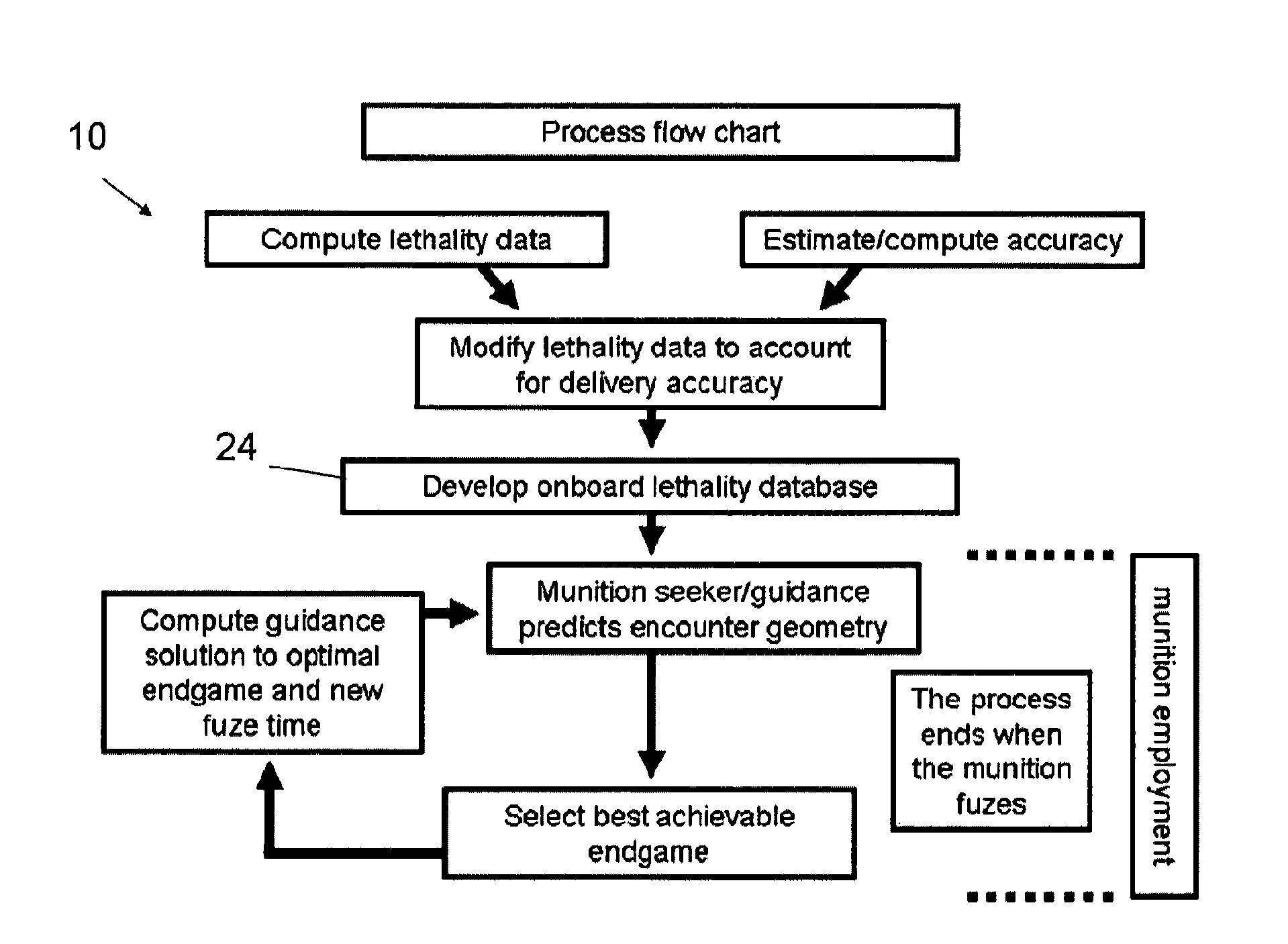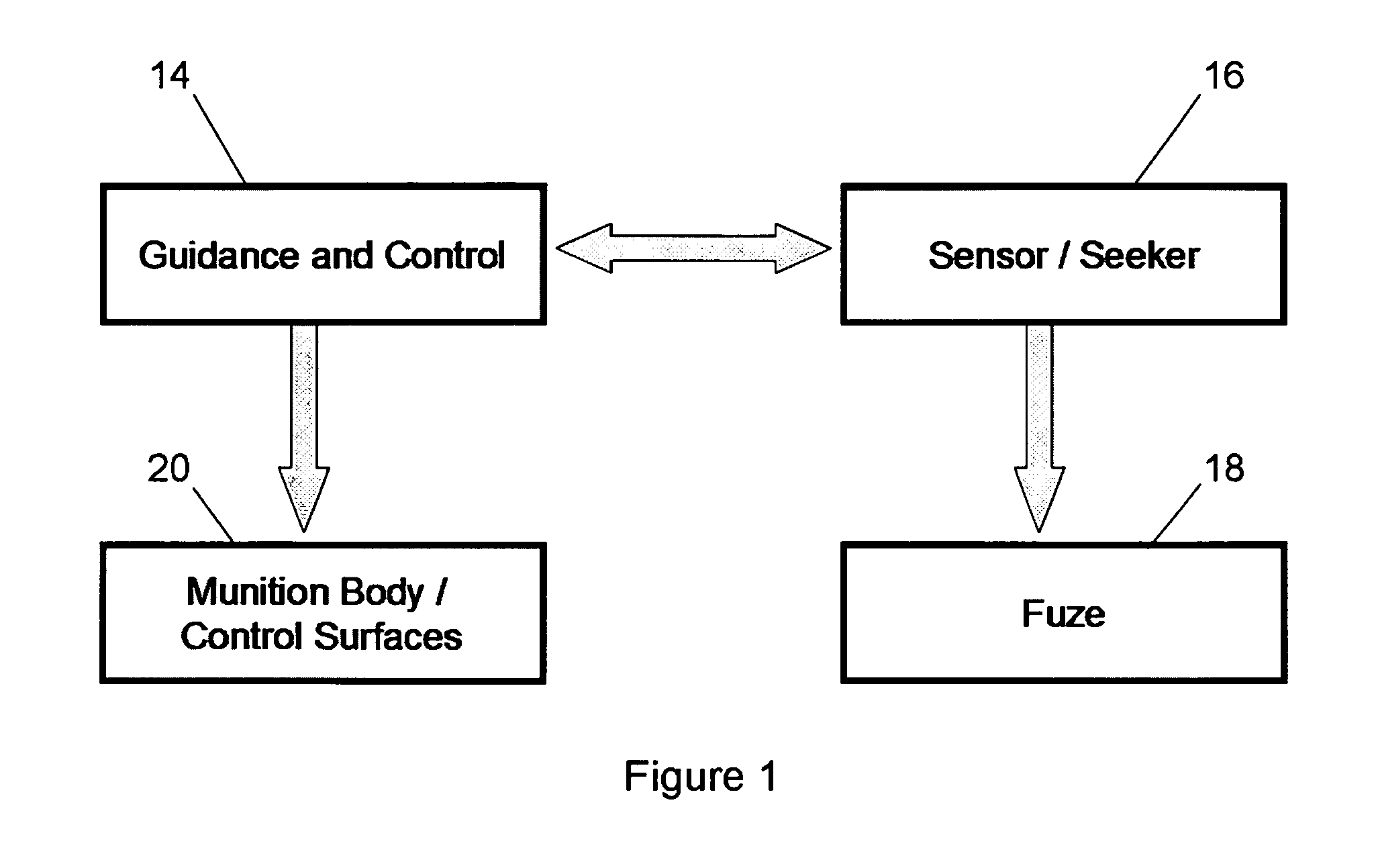Munitions endgame geometry for optimal lethality system
a technology of endgame geometry and optimal lethality, applied in the field of airborne munitions asset onboard system, can solve the problems of high kill probability, and achieve the effect of increasing kill probability, high kill probability, and high kill probability
- Summary
- Abstract
- Description
- Claims
- Application Information
AI Technical Summary
Benefits of technology
Problems solved by technology
Method used
Image
Examples
Embodiment Construction
[0023]Referring now to the drawings, it is seen that the munitions endgame geometry for optimal lethality system (MEGOL) of the present invention, generally denoted by reference numeral 10, is comprised of a system that is integrated into the on-board control circuitry of an airborne munition 12 of any appropriate type, including air-to-surface, air-to-air, surface-to-air, surface-to-surface, anit-ship, and anti-satellite munitions. As seen in FIG. 1, a typical modern day “smart” weapon has four major components that are used for the desired delivery of the weapon 12, the guidance system 14, the sensor system 16, the fuze system 18, and the flight controls 20 that control fly out operations of the weapon 12. These systems operate to bring the weapon 12 to a moving target 22 and attempt to deliver the weapon to the center of the target 22 with the munition on board the weapon 12 being fuzed in some preprogrammed fashion (which may or not be impact, or timed or computed via a separate...
PUM
 Login to View More
Login to View More Abstract
Description
Claims
Application Information
 Login to View More
Login to View More - R&D
- Intellectual Property
- Life Sciences
- Materials
- Tech Scout
- Unparalleled Data Quality
- Higher Quality Content
- 60% Fewer Hallucinations
Browse by: Latest US Patents, China's latest patents, Technical Efficacy Thesaurus, Application Domain, Technology Topic, Popular Technical Reports.
© 2025 PatSnap. All rights reserved.Legal|Privacy policy|Modern Slavery Act Transparency Statement|Sitemap|About US| Contact US: help@patsnap.com



